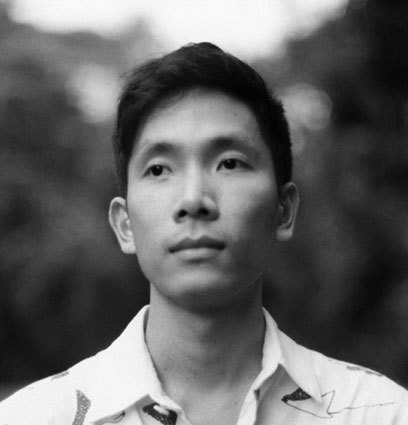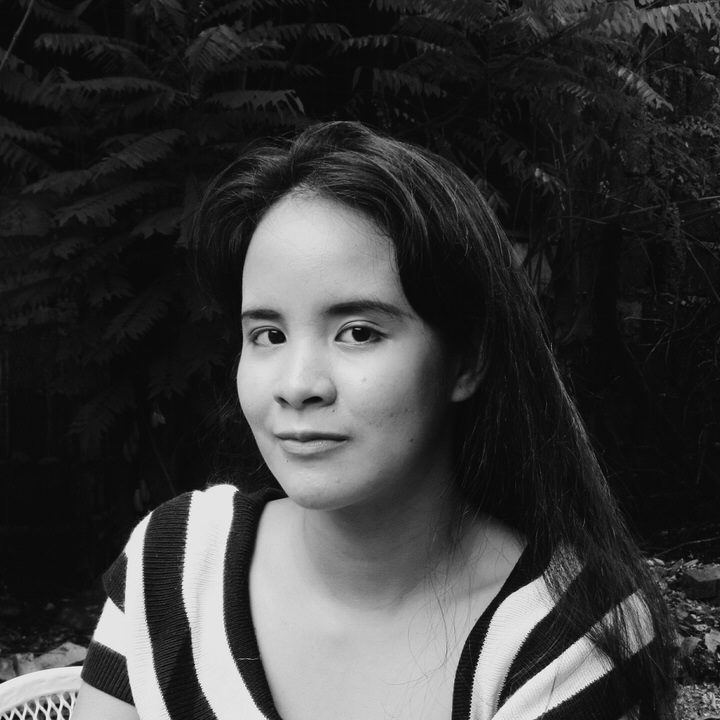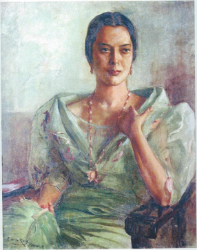PRINTED IN BOLD LETTERS as tagline on a movie poster: “Freedom this year is freedom forever.” The contemporary relevance obviously holds. However, the movie is titled “On to Singapore,” a Japanese movie commissioned during World War II to promote Japanese authority and occupation. It is part of “Propaganda,” this year’s museum-space curated by the Lopez Museum and Library in Pasig City.
“Propaganda,” as exhibit, traces the possibilities of unrealized spaces and futures through war propaganda materials, works by Filipino masters, and contemporary art pieces. Spanish-era books on religious practices, digitized motivational propaganda, editorial cartoons from the 60’s, ancient maps on Asia, classics of Luna and Amorsolo: they all reappear here as works re-charged by their new context. After all, curation under propaganda infuses even apolitical pieces with destabilizing potential. The burden is to locate what this exhibit destabilizes, and what future it wants to arrive at.
Joey Cobcobo’s Tahanang Walang Hagdanan locates subversion in a domestic setting. A three-step staircase lies in the middle of the piece, wet with ink, and bakya with carved undersides can be found in the surrounding area. Participants wear the bakya, step on the inked stairs, and then print on the canvass set as floor. Three ladders morphed together hang above, intruding even the museum’s ceiling. Participating in the art piece, literally “visiting” the house which is not present, already speaks propaganda’s nature: even in everyday movements (in this case: walking) unrest manifests. One cannot help but speak and resist. The absent house is both venue and cause for concern, an irony covered by its title.
Absence is negatively utilized in Nunelucio Alvarado’s Wala Title as it streams massively across an entire wall, divided into two sections. The section on the right features a slogan painted red on newspaper, under which are human figures rendered and shaped by distinct geometrical constraints. The faces here are significant, as the left section is mapped with hundreds of similarly distorted faces on small cards. Eyes here bulge as circles, teeth are sharp with straight lines hardly contained by curves, and the multiplicity of faces are menacing. Alvarado’s faces gaze back at the viewer, distorted eyes and all, as propaganda is made personal. “Personal” here is not simply the state of affairs of individuals, but the inherent politicizing of the act of looking: why are you looking at these faces, who are you to look at them, and do you not know why they look at you?
Two video installations, Don Salubayba’s A Not So Giant Story and Alvin Yapan’s Ulang Palay, utilize two different modes of looking through film. Salubayba contrasts light and dark in his shadow play by highlighting their contrasts as movement, while Yapan deceives viewers into thinking static as rice grains are seemingly caught in endless motion. These two instances of movement return to the primary logic of propaganda. The endless rain of rice and the Philippines narrative are results that propagandists would aim to realize. Thus the art-making is one way of actualizing and realizing – or so it seems.
The importance of realizations should be theorized: remember that for things to be realized, for propaganda to work, certain agencies and bodies must move as response to the propaganda. In this case, the movement in these video pieces lull the viewer into thinking that propaganda has already set things in motion. Yet there is a reason why the line has always been drawn between art and propaganda. The art object does not contain the physical transportation of bodies, nor does it guarantee any ideological change in a viewer. In the same way, movement on the screen does not guarantee the arrival of this future. It simply means the present is happening.The video installations are showing something in the present.
This meandering on the present finds itself tuned to the past in Santiago Bose’s Pasyon at Rebolusyon. Cult items alongside Katipunan symbols are arranged into an altar set in a dark room. Cult artifacts are known for channeling beliefs into tangible effects (an eerie analogy for propaganda), and here, the religious is tainted into the physical realm. Eyes, candles, bones – impractical objects want to realize their symbolic power. The installation, in its present state, carries war memories into another unrealized future – a future where the revolution is finished or successful. History insists on success, but the return of these images might mean that things have not ended. There is still work to do. Propaganda’s operation is always to point where things should head without really pushing the tangible body into action.
Not merely telling, but re-writing, and possibly writing over. The exhibit is as much the unrealized spaces and futures it wishes but never actually shows. The idea of history is not mere chronicling but also chasing these futures that one can still possibly utilize. Already-realized propaganda is a dead end – meaning, there is no future after that. Meaning, let these futures exist, even as manifestos and images bound in time. “Propaganda,” as both term and exhibit, points a future. Cobcobo’s work excellently operates this metaphor of futures yet to arrive. With the title Tahanang Walang Hagdanan, the ladder is here but the house is not. That’s not to say impending realizations are out of the question – propaganda even pushes for participants to look towards futures. And yes, most of the time, it means pointing towards spaces that have yet to happen. The exhibit pushes for an agenda with no clear image, and it is here the logic operates best. After all, it’s this pointing towards the absent object, as in the burning Intendencia that Fernando Amorsolo paints to, that threatens everyone to loosen their grip on the tumultuous present. Only then do people start grasping for futures.








